While replacing the lines, I'm also trying to use E85 (ethanol fuel) compatible parts, so that it's possible to run on cheaper (or, just existent...) fuel in the future. Stainless steel, and hoses and O-rings specified for gasoline and ethanol should be sufficient.
Pipes
The pipe layout looks like this:There are 3 underbody fuel pipes:
- Fuel feed to the TBI unit (outside diameter 9,5 mm)
- Fuel return from the TBI unit (outside diameter 8 mm)
- Fuel return from the evaporative emissions canister (outside diameter 8 mm)
For the feed pipe, I've purchased 4 m of 10mm outside diameter steel pipe w/ 1,5 mm wall thickness.
For the return pipes, two
Total cost for the pipes was € 89,35.
Fuel Level Sending Unit
In the tank end, the pipes form part of a device called the Fuel Level Sending Unit (or Assembly) that also holds the fuel pump and fuel level sensor. The current one is in as terrible condition as the underbody pipes, so I've acquired a new one. The unit is a Spectra Premium FG20A from RockAuto, cost € 100.46 ($127). Unfortunately I don't know what material this unit is, i.e. whether it's E85-compatible. At least it's new.
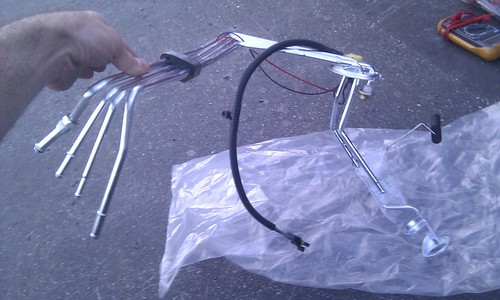 |
| Fuel Level Sending Unit |
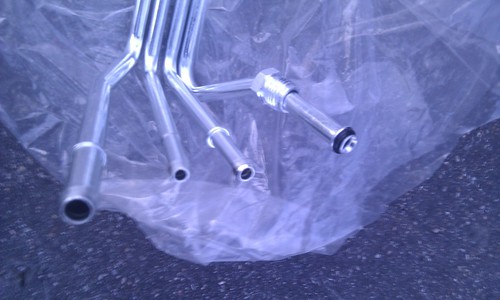 |
| Fuel Level Sending Unit - hose connectors |
Counting from the left:
- Vent (breather) pipe (?)
- Evaporative Emission System line (?)
- TBI return line (?)
- Fuel feed line
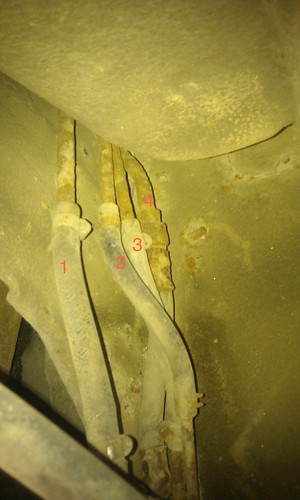 |
| This is how the current sending unit's pipe ends look like. |
The hose in the leftmost pipe connects to this mushroom-like device.
Fuel Tank
Apparently removing the fuel tank is a very involved process, as this post on thirdgen.org elaborates. Hence, a common way to replace the fuel pump on this car is to cut an access hole in the boot and split the fuel sending unit's pipes, and this is what had been done to my car in the past too:

I don't know yet whether I can wiggle in the new sending unit without cutting the pipes as well.
Engine room
The engine bay connectors look like this. The topmost U-shaped hose is the fuel feed line, and the lower one is the return line. The the large black cylinder in the top right corner is the Evaporative Emissions System canister.
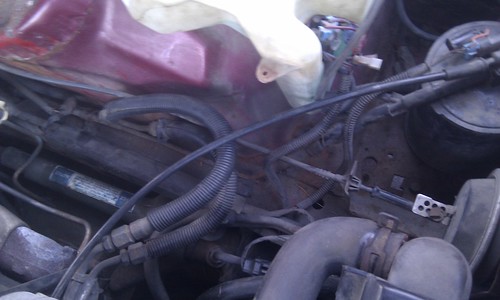

Connectors
I've yet to find out, with certainty, what connectors to use (diameter, thread type) or how they should attach to the pipes.The fuel underbody fuel lines contain five threaded connectors:
- Fuel feed line:
- Body-to-sending unit
- Fuel filter intake
- Fuel filter exit
- Body-to-Engine fuel hose connector (pic above)
- Fuel return line:
- Body-to-Engine fuel hose connector (pic above)
- Evaporative emissions line:
- Body-to-canister
- Body-to-sending unit hose
- Fuel return line:
- Body-to-sending unit hose
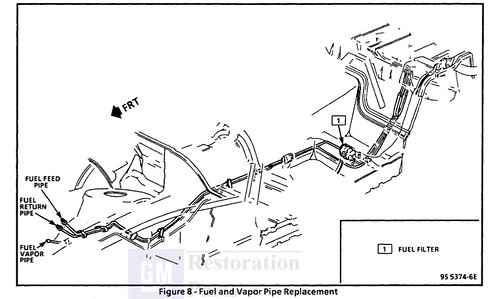
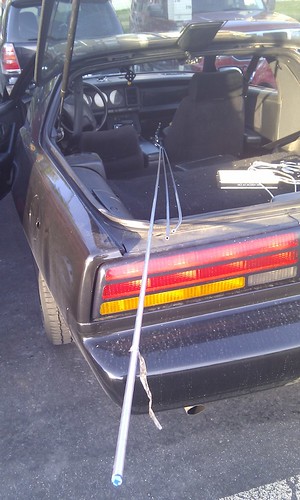
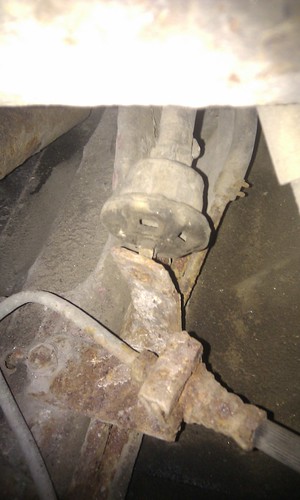
Someone please help! I was helping my son work on my 1991 Firebird and I removed the cable from the battery, when I went to re-connect it I moved the fuel line over so it wouldn't be in the way, forgot I moved it, started the car and the alternator cut a hole through the line. Does anyone know how to stop the fuel from leaking until I can get it repaired??? Help? Please...
ReplyDelete